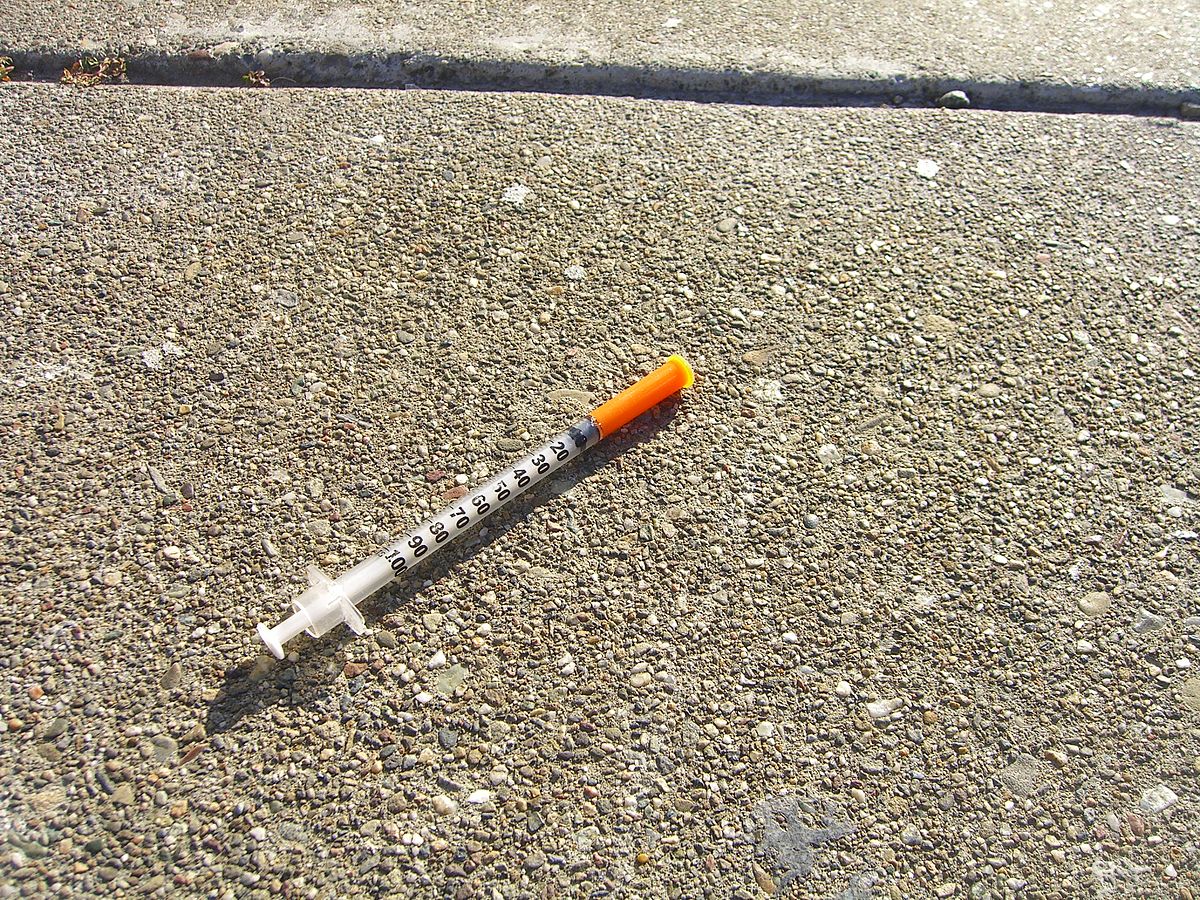The Calgary Fire Department’s calls for pickup of discarded needles is up 325 per cent over seven years ago, but the department isn’t sure it’s tied to the opioid crisis.
When calls come in about discarded needles – sometimes called sharps – in a public space, it often falls to the fire department to attend and pick them up because they are considered a potential biohazard.
In 2010, the department received 151 calls for sharps pickup, but the number has been steadily increasing each year since then, to a high of 642 calls in 2017.
The year-to-date numbers for 2018 show they’re on track to at least match that number again.
The number of needles picked up in any given year isn’t increasing. The department actually picked up nearly 3,300 needles in 2010, and slightly more than 2,100 last year.

Brian Ladds, hazardous material coordinator for the Calgary Fire Department explained why those numbers don’t match up
“When the crew get called out to pick up a needle off the street or sidewalk, there might be one or two, there might be more,” he said.
“It’s very difficult to get a correlating number that corresponds to the actual number of call-outs.”
He said the pickup process is fairly straightforward.
“We just use a pick-stick or a pair of pliers to pick up the sharp and put it in a container,” said Ladds. “The tool can just be disinfected and cleaned afterwards.”
Other organizations in the city also provide the service of picking up discarded needles, so the numbers provided are only what the fire department has encountered, and not a complete total for the city.
Ladds wasn’t prepared to link the rising number of calls for cleanup to the opioid crisis.
“It’s probably more public awareness,” he said. “People are a lot more aware of the social issues now so they’re probably more likely to make a phone call if they see a sharp on the street.”
Dr. Nick Etches, medical officer of health with Alberta Health Services, said education on safe disposal is a big part of the work they do in harm reduction through the Safeworks program.
Safeworks provides an array of services aimed at reducing harm for drug users, including education, counselling and testing for infections such as HIV and hepatitis C.
Handing out sterile needles for drug injection is also an important component of Safeworks.
“We do not want people to reuse needles or share needles,” said Etches. “That prevents the spread of both infections, HIV and hepatitis C, but it also prevents the spread of bacterial infections.”
He said over the past several year they have seen an increase in the demand for sterile needles for drug injection.
In the six-month period of April to September 2012, AHS handed out 223,000 needles in Calgary. In the same six-month period in 2016, that had jumped to 430,000 needles.
In distributing those needles, Safeworks also hands out sharps disposal containers, so needles can be safely disposed.
Etches said it’s important to provide as many needles as needed to users to prevent any needle sharing. That, he said, presents the greatest public health risk for infection transmission.
“The risk associated with that is much greater than the risk that’s associated with a needle that’s been lying on the street for hours or days, and I think that’s important for people to remember as well.”


